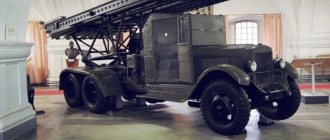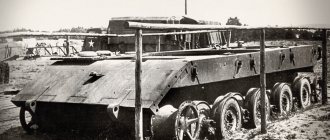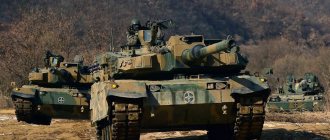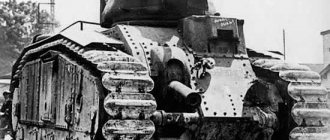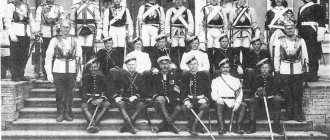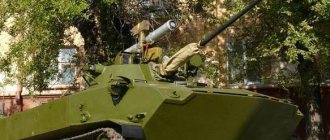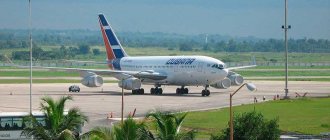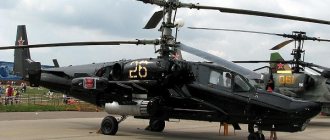It's funny, but the Museum of Russian Military History in Padikovo, Moscow Region, is the only place where the T-90 can be seen as a museum exhibit.
The rest of our brethren carry out military service to varying degrees of combat readiness, and mostly they do this far beyond the borders of Russia.
Of the fairly decent number of tanks produced, the T-90/T-90A produced about 625 units, the T-90S/T-90SA - about 1,500 units, a total of 550 tanks (mainly T-90 and T-90A) are in Russia , with about 200 in storage. The rest are scattered around the world, and, in light of the successful use in Syria, contracts have been concluded for more than 500 vehicles for Egypt and Kuwait.
However, there is still debate about the existence of the T-90. Some consider it a step forward, others just another modernization of the T-72B.
In fact (as one opinion, yes) the T-90 is a continuation of the family of T-72 and T-80 vehicles. That’s right, because some things came from the T-80, for example, the 1A45 Irtysh fire control system (FCS), successfully combined with the tank’s automatic loader.
Work on the vehicle began in the late 80s of the last century, and the tank entered service in 1992, already in Russia.
If you look closely, then in fact the T-90 does not have any special changes compared to the base models. Of course, so many improvements and upgrades were made to the T-90 tank, for example, the fire control system and protection were improved, the armor became multi-layered and with built-in dynamic protection.
The tank was also equipped with the latest optical-electronic suppression complex (KOEP) “Shtora”, which protected the vehicle from anti-tank weapons, especially those with a laser guidance head. It cannot be said that the new tank was a breakthrough in terms of its technical characteristics, but the protection and firepower of the vehicle were increased.
So we can say that the T-90 is a deep modernization of the T-72B, but so deep that it has the right to its own name. After the death of Vladimir Ivanovich Potkin, the chief designer of the tank, in 2010, by decision of the government of the Russian Federation the T-90 was given the verbal name “Vladimir”.
The T-90 has a classic layout: the control compartment is located in the bow of the tank, the fighting compartment is in the middle of the vehicle, and the engine and transmission are in the rear of the tank.
The tank's crew consists of three people: the driver is in the control compartment, and the commander and gunner are inside the turret, to the left and right of the gun.
The main armament of the T-90 is a 125 mm smoothbore gun. The gun is equipped with a stabilizer operating in two planes, has a system for recording barrel deformation and a system for pumping out powder gases. The gun's rate of fire is 8 rounds per minute.
The T-90 is also armed with a coaxial 7.62 mm machine gun and a 12.7 mm Utes machine gun on the turret as an air defense weapon.
The tank's ammunition capacity is 42 rounds and includes various types of ammunition:
- armor-piercing sub-caliber projectiles 3BM42;
- armor-piercing cumulative projectiles 3БК29М;
- high-explosive fragmentation shells with an electronic remote fuse;
- ATGM 9M119.
The firing range of anti-tank missiles ranges from 100 to 5000 meters.
Fire control system. All data on the situation, such as firing range, wind direction and speed, air temperature, tank position are taken into account and processed by the processor. The gunner simply needs to aim the sight at the target and fire. The tank is equipped with a Buran-PA night sight and an Agat-S tank commander sighting system.
The T-90 is equipped with a four-stroke 12-cylinder diesel engine; in later versions of the vehicle it was replaced with a more advanced engine with a turbocharger, which increased its power from 840 hp. up to 1000 hp The engine provides greater mobility and maneuverability of the tank; it is not for nothing that the T-90 is called the “Russian flying tank.” Planetary transmission. The T-90 has 7 forward and one reverse gears.
The design of the T-90 uses the chassis of the T-72 tank, so it’s difficult to add anything. Tested by years and conflicts.
The T-90 tank is protected by its multi-layer armor, with a built-in dynamic protection system, KOEP “Shtora”, which protects the vehicle from anti-tank weapons with a semi-automatic guidance system or laser homing. Laser radiation sensors ensure its reception within a 360° radius, the data is quickly processed, and an aerosol grenade is fired in the desired direction, blocking the laser beam. The tank also uses a modern fire extinguishing system.
The weak and vulnerable point of protection of the T-90 tank is the location of the fuel system. The fuel tanks are partially located in the combat compartment and are in no way separated from the crew. Another problem with the security of this vehicle is the placement of ammunition inside the fighting compartment, while it is also not isolated from the crew. Its detonation is guaranteed to lead to the destruction of the tank, tested in Syria.
For convenience. The tank is not cramped inside, but something will be placed on every square decimeter. Blocks, panels with buttons and toggle switches, taps. Quite a busy household, to be honest.
If we take into account the fact that the latest modifications of the T-90AM/SM are equipped with a modern Kalina fire control system, including a multispectral gunner’s sight, a commander’s panoramic sight with a digital ballistic computer and a set of firing conditions sensors, then I think there are even more associated knobs and pushers.
The Kalina includes a software and hardware complex (PTK) for interaction between a tank/motorized rifle battalion. It allows you to combine all the combat and assigned vehicles of a unit into a single information network, exchange information about the location of any combat vehicles of the battalion and the forces assigned to it, the deployment of the enemy, and receive and transmit information to higher command levels.
You can list for a long time the differences between the T-90S/T-90MS and the conventional T-90, but in my opinion, these are different tanks, of a different generation. Lots of electronics, lots of independence.
How realistically can the T-90MS and T-72B3 be compared... I think this should be done by a specialist. We simply showed, using the example of the basic T-90 model, that the tank has potential for upgrades and further development.
Main performance characteristics of the T-90 tank
- Crew: 3 people
- Tank weight, t: 46.5
- Engine power, hp: 800/1000 l. With. (diesel)
- Fuel capacity main tank/mounted tanks, l: 1200/400
- Cruising range on main tank/mounted tanks, km: 550/200
- Highway speed, km/h: 60
- Speed on arable land, km/h: 50
T-90. The main brand of the two thousandth
Immediately after the end of the Great Patriotic War, powerful competition arose between Soviet enterprises developing tanks. The situation in the industry was very reminiscent of the Cold War. With considerable effort, the management of Uralvagonzavod managed in the late 80s to obtain permission for a deep modernization of the T-72 tank. Thus, the conditions were created for the appearance of the T-90 in the future.
Russian firstborn
The T-72, the most popular Soviet tank, was a so-called mobilization vehicle, designed to enter battle in the second echelon and no longer fight with selected enemy units.
It had to be operated mainly by tankers with poor training, and, as a result, the T-72 was extremely simplified. Its main drawback is its extremely imperfect fire control system. The new car of the Ural designers should have lost this flaw. During a year and a half of testing, the experimental T-90 covered 14,000 kilometers without a single serious breakdown.
The prototype, designated “Object 188,” was submitted for state testing in January 1989. The machine showed itself with dignity: it was reliable in any conditions, including long-term operation at extreme conditions. During testing, “Object 188” traveled 14,000 kilometers without serious breakdowns - this is the service life that was built into it by the designers before major repairs.
In 1991, the USSR Ministry of Defense recommended a new tank for adoption. But due to the difficult political situation in the country, which ended with its collapse, the final decision was delayed until October 1992. Only then was the Object 188 finally put into service. Initially, they were going to give it the designation T-72B, but then Russian President B.N. Yeltsin personally ordered that the vehicle be named T-90. This is how the first production tank of the Russian Federation appeared.
"Nineties" from the inside
The most important innovation in the design of the T-90 is the Irtysh fire control complex. The T-72 sorely lacked such a system. The complex includes an automated fire control system, day and night sighting systems, a ballistic computer, weapon stabilization systems and much more. Thanks to it, the T-90 can very effectively hit vehicles at long range. At one of the demonstrations of the vehicle to foreign delegations, seven real targets were shot from a tank moving at a speed of 25 km/h in less than a minute from a distance of one and a half to two and a half kilometers.
“Irtysh” not only searches, detects and identifies the target. It takes into account many factors that influence the effectiveness of a shot. Target speed, speed of your own tank, wind corrections, atmospheric pressure, gun barrel wear - these are only some of the parameters that are taken into account in the calculation.
The T-90 is equipped with a complex of optical-electronic protection against anti-tank guided missiles (ATGMs). This system monitors the launch and trajectory of the missile, interfering with its control system. If necessary, special grenades are fired, creating an aerosol cloud that covers the tank, weakening and reflecting laser radiation, which is used today to guide ATGMs.
Like all Soviet tanks produced after 1954, the T-90 is equipped with collective protection for the crew from weapons of mass destruction. A special polymer lining with the addition of lithium, boron and lead protects against radiation. Air filters prevent poisonous gases and radioactive dust from entering the housing.
Shield, sword and “heart” T-90
When firing an anti-tank guided missile, the T-90 can hit an enemy vehicle at a distance of up to five kilometers
In full accordance with the traditions of the Soviet school of tank building, the T-90 has small overall dimensions and a very dense layout. This is both an advantage and a disadvantage. Thanks to its compact size and low height, it is difficult for the enemy to aim. But if it hits and penetrates, the projectile will definitely hit the internal modules or tankers.
The developers tried to protect the car well. In addition to traditional armor made of combined materials, the tank received built-in dynamic protection. Previously, these metal boxes with explosives could only protect against cumulative shells. Modern dynamic protection also helps against sabots, although not as well. If the armor penetration of cumulative ammunition is reduced by more than half, then of sub-caliber ammunition - by only 20%. Dynamic protection is also installed on the roof of the T-90 turret.
The main weapon of the tank is a smoothbore 125 mm cannon with separately loaded rounds. Thanks to the automatic loader, it has a technical rate of fire of up to 8 rounds per minute. The ammunition load includes sub-caliber, cumulative and high-explosive fragmentation shells. Relatively recently, another type of projectile appeared - fragmentation and shrapnel with a remote fuse. It is very effective in the fight against unprotected enemy personnel and combat helicopters.
The T-90 gun can fire not only shells, but also anti-tank guided missiles. With the help of an ATGM, an enemy tank is guaranteed to be hit at a distance of up to 5000 meters. In the years when the T-90 was put into service, this was a record result.
The tank's engine is a multi-fuel diesel engine. This means that you can fill the tank not only with diesel fuel, but also with kerosene or gasoline. At the same time, tests have shown that a slight loss of power is observed only when refueling with gasoline.
The T-90 is equipped with underwater driving equipment, which can be installed in just 15 minutes, and a self-digging system, thanks to which the vehicle can dig a trench in unfrozen soil in less than half an hour.
Despite the fact that the T-90 was put into service more than two decades ago, this tank has not yet become widespread. To date, about 2,000 copies have been produced, about half of which have been sold for export, mainly to India. The tank did not take part in hostilities.
How to play?
Start passing levels by choosing the very first one. Control your tank and move very carefully, hiding behind walls and using all obstacles to your advantage. Shoot at enemy tanks when they are facing the other way. Keep an eye on every tank on the battlefield and don't let them get close to your base. The enemy's intelligence is very high, so players will have to be very careful. For killing each enemy tank, you receive points that determine your overall result at the end of the level.
At the moment the game only has a single player mode, but it is no less interesting than the two-player mode. Soon, a two-player mode will be added to the game, so it will be fun. You can even play your favorite Tanks 1990 with your friends.
Are you ready to start fighting in the battle city? Then get started!
Here is the online game Dandy Tanks 1990 , you can play it for free and right now.
Section: Tanks Games
4.0948660714286 (Game ratings 896)
Game controls:
- - management
- - start / pause / select
- - fire / build a block in constructor mode
- - select game mode
Main features of the new T-90MS tank
The main difference between the T-90MS was the turret, which was completely different from the turrets of previous T-90 models. The new turret received multi-layer armor and was equipped with entire complexes of the latest combat control systems, many of which were innovative. The search for the target was now carried out by the tank commander, handing over the found target to the gunner in fully automatic mode.
Even today, thanks to constant improvements to the model, the T-90MS tank is not only not inferior in search and target targeting parameters to the best tanks in the world, but also surpasses some of them in a number of parameters. The command control parameters of the T-90MS tank are perfectly balanced, and the ability to hit a target with the first shot puts this model on the leaderboards year after year.
Another huge advantage for the T-90M tank is the presence of a 125 mm cannon, for the creation of which metal was used, which has a huge margin of safety. This made it possible to significantly increase the service life of the gun, regardless of the rate of fire. If we compare the Russian tank with its closest competitor, the Leopard-2 tank, the T-90MS can fire more intensely without fear of gun failure. In general, the Russian tank is able to “work” more effectively in battle.
Dynamic protection of the T-90MS tank hull covers the most important modules of the tank. It is able to withstand almost all types of modern sub-caliber projectiles. If you believe the words of the tank’s creators, the dynamic protection can even withstand hits from modern anti-tank shells. The only miscalculation of the designers is the lack of dynamic armor on the lower frontal plate of the tank. Even the T-72B had one row of armor on the lower frontal plate.
As for the armor of the tank turret, not everything is so simple. The sides of the turret's aft niche do not have dynamic protection. Since the turret contains an ammunition rack, a shell hitting this area can cause serious damage to the tank. Perhaps in the future, this miscalculation will be eliminated by the developers.
The T-90MS tank is equipped with a modern fire control system. Such systems are a mandatory element of equipment for new tanks. All these systems work on the same principle; their main task is to detect the enemy and hit him with the first shot. In order to more effectively hit targets, the T-90MS tank has a target tracking system. Since modern tanks most often work as part of a group, they are equipped with a system for interacting with each other. At the same time, each tank can receive target instructions from the main tank of the group. It is planned to install the next generation Armata tanks as the command tank of the T-90MS group.
In addition to external changes, the T-90MS tank has also changed significantly internally. Now the driver controls a multi-ton combat vehicle not with the help of levers, but with the help of a multifunctional steering wheel. The T-90MS has an automatic transmission, which greatly facilitates the work of the driver-mechanic. All previous modifications of the T-90 had a manual transmission.
Another important innovation of the T-90MS tank is the presence of an electricity generator. Now, when parked, the tank is practically invisible to enemy detection in the infrared range. This becomes possible due to the use of an autonomous generator.
History of the T-90MS tank
The biggest hit in Postnikov's speech was the T-90MS tank, which was not only called a "restyling" of the T-72, but also incredibly expensive to produce. According to Postnikov, for the money that could buy 1 T-90MS tank, you could buy 3 German Leopard-2 tanks. However, the check showed that instead of 1 T-90MS tank, you can buy only 1 Leopard-2, and even that in the “basic” configuration.
In those years, it was very popular to criticize Russian military equipment. Some military officials considered the possibility of opening a line for the assembly of Italian armored vehicles in Russia, and in the summer of 2011 a contract was signed with France for the purchase of 2 Mistral amphibious helicopter carriers. However, in 2015 this contract was terminated.
As for the T-90 tank, its history began on June 19, 1986, when the Council of Ministers of the USSR and the CPSU Central Committee issued a Resolution on the start of development of the T-90 tank. After 5 years, an experimental model of the tank was tested and recommended for adoption. The collapse of the USSR prevented this vehicle from entering the series, although a year later the tank was shown to Russian President B. Yeltsin. After 3 months, the tank was put into service under the name "T-90". Since the economic situation in Russia was very difficult in the early 90s, Uralvagonzavod, which produces the T-90 tank, received permission to produce an export model of the tank under the name T-90S.
Despite difficult economic conditions, by the end of 1995, 250 T-90 tanks were produced, many of which were tested in real battles in Chechnya. The militants could not do anything against the powerful armor of the T-90 tank. After 1995, the budget for the purchase of tanks was sharply reduced, after which Uralvagonzavod switched to export production, otherwise it simply could not survive.


